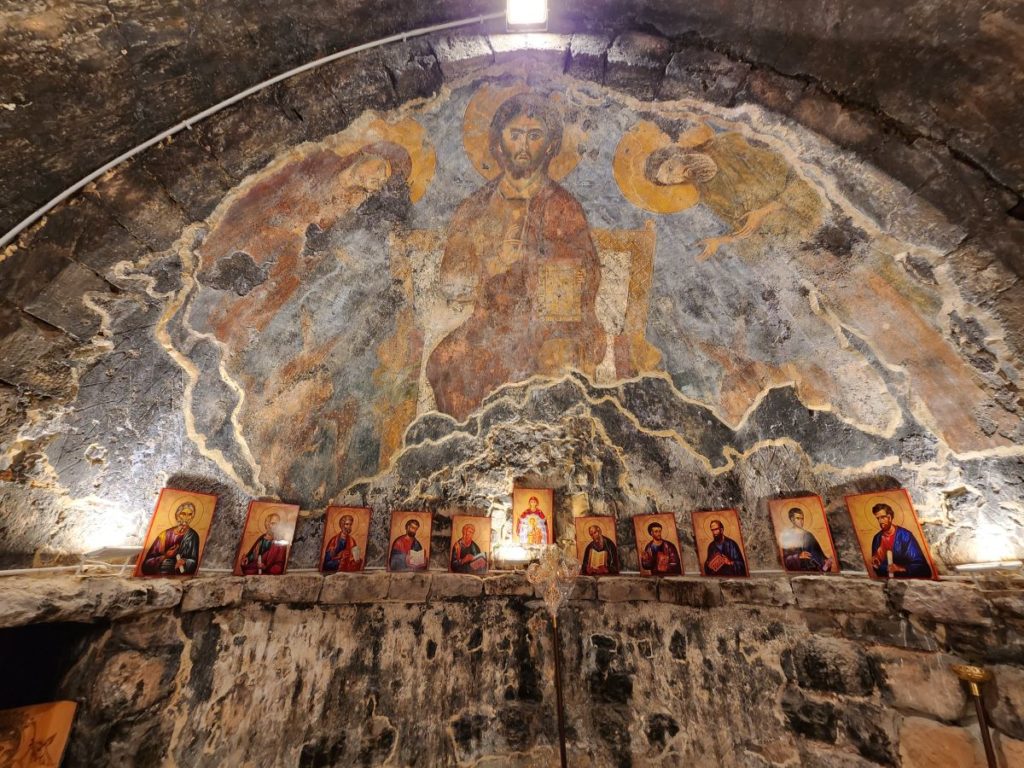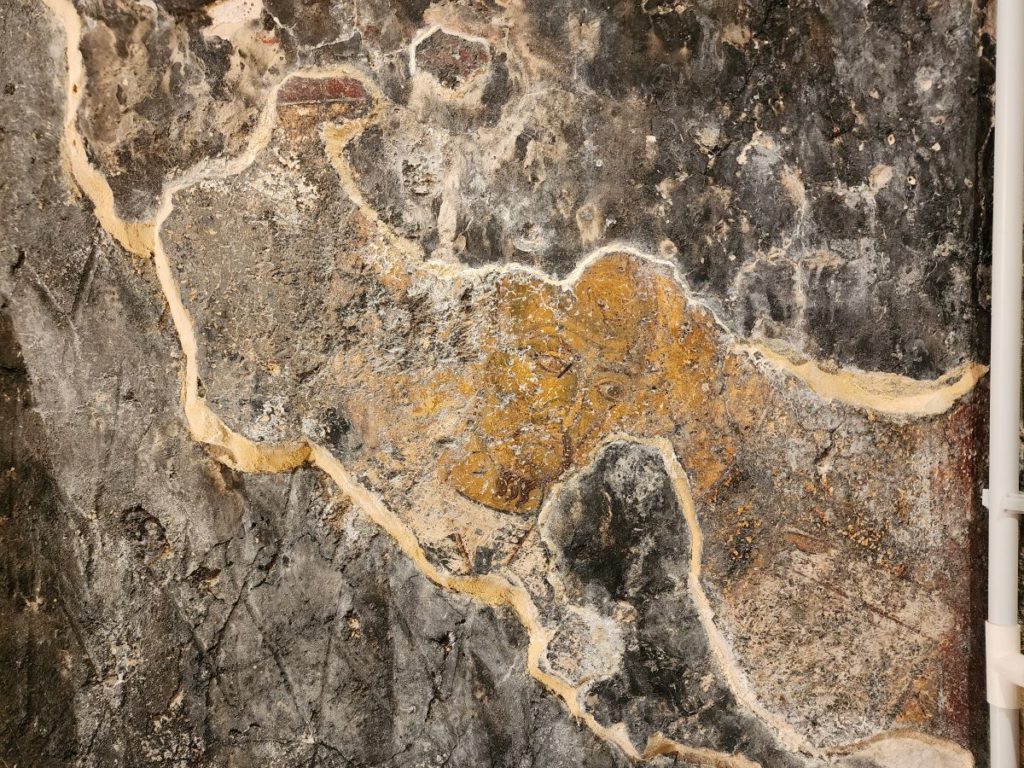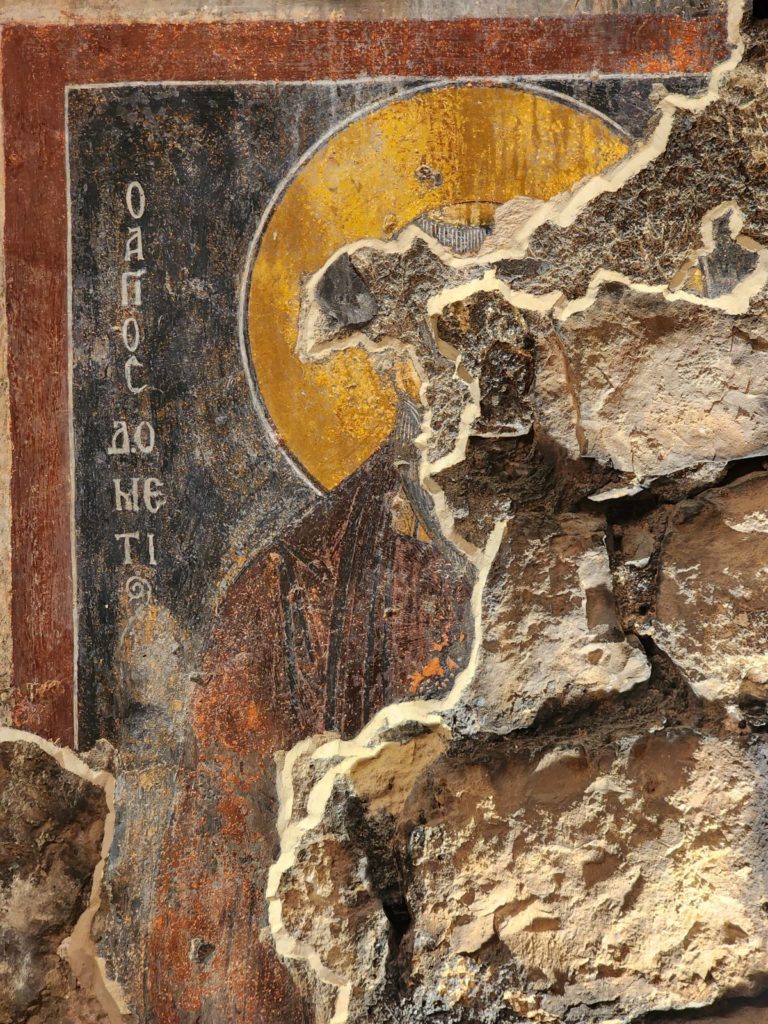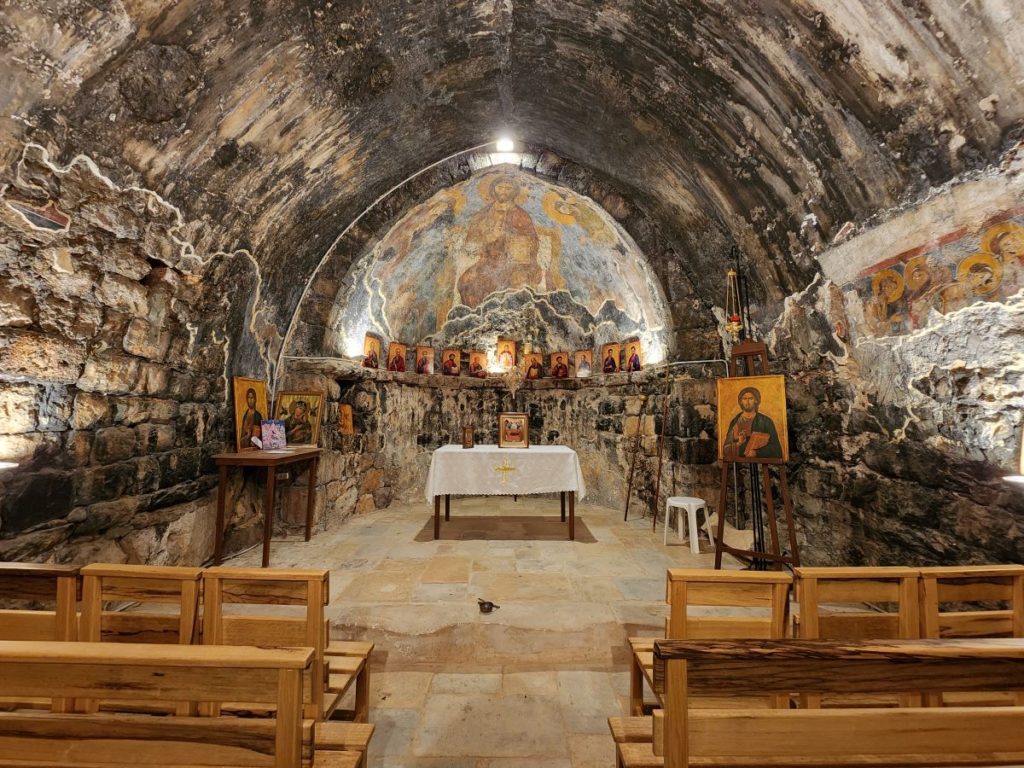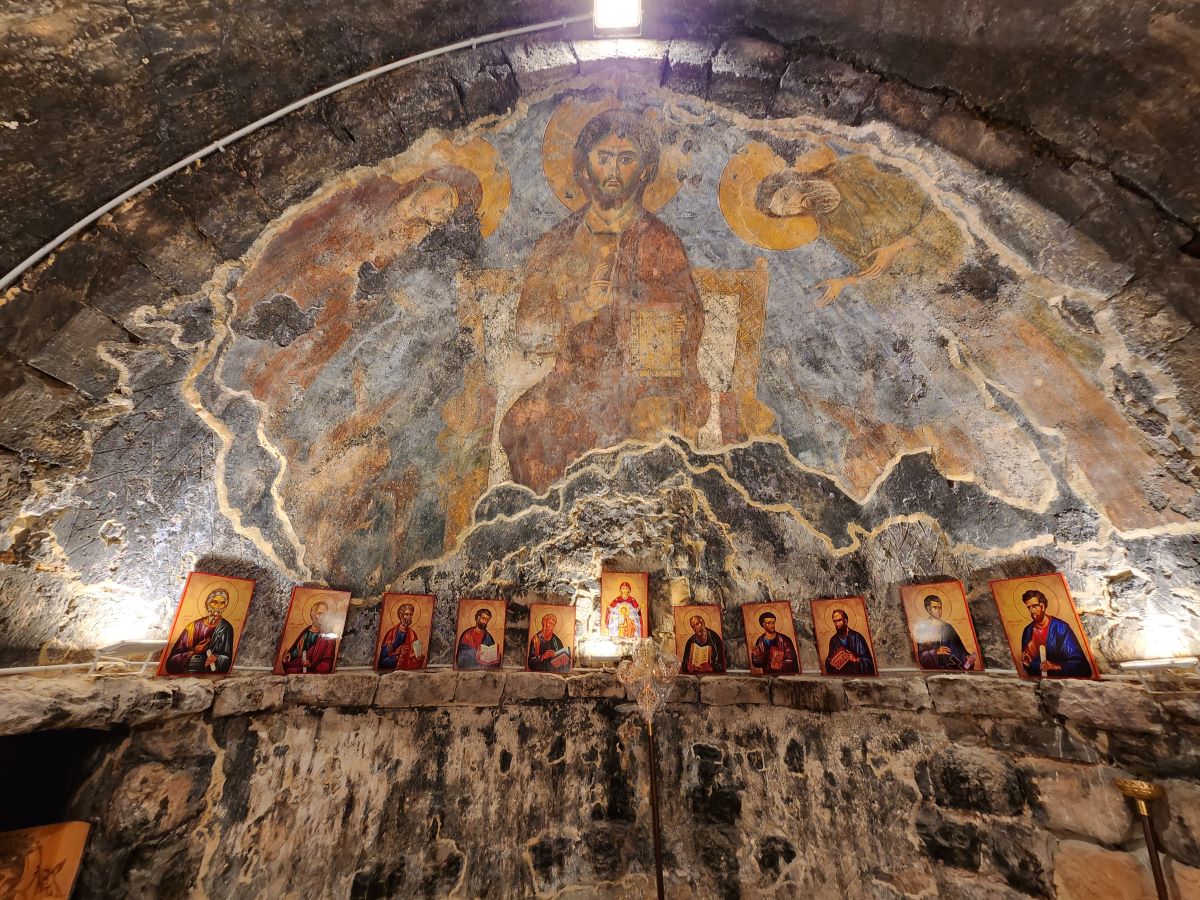The modest church of Saydet El Kharayeb, Kfarhelda, features unique 13th century Byzantine art frescoes.
The apse
A Deisis-vision occupies the shell of the apse, dominated by the central figure of Christ on a throne appearing on Judgment Day, surrounded by the Virgin and Saint John the Baptist begging him to forgive Humanity.
Behind the throne are represented the four symbols of the evangelists: the angel for Matthew, the lion for Mark, the bull for Luke and the eagle for John.
Between the throne and the intercessors appear celestial creatures: a relatively well-preserved cherub and a fragment of a seraph recognizable by its oscillated wings with a Greek abbreviation identifying it. Each carry a labarum (banner) on which the word ‘holy’ is written in Greek three times in a row, the trisagion – a standard hymn of the Divine Liturgy, thus summing up Ezekiel’s acclamation at the vision of the Savior: “holy, holy, holy is the Lord armies! (Ezekiel I, 4, XLIII, 2-4).
The inscriptions accompanying the protagonists present in the composition are in Estrangelo (ancient Syriac script) and in Greek for the abbreviations. Right and left of Christ’s face, a Syriac inscription is found in horizontal designating “Jesus Christ”, as well as two others written vertically above the seraphim and the cherub to designate the Ecphonesis (an emotional, exclamatory phrase used in poetry,drama, or song). The names of the Virgin, the Forerunner and the celestial powers are designated in Greek. This cohabitation of the two languages is a common practice in medieval painting in Syrian-Lebanese land.
The apsidal wall, where the coating is completely stripped, probably housed the twelve disciples standing facing, or represented a communion of the apostles or any other composition related to the Divine Liturgy and more precisely to the sacrifice.
The north wall
A mutilated representation of a bald bishop with a broad forehead canbe noticed; it is the figure of Saint John Chrysostom (347-407), Archbishop of Constantinople.
On the same wall, towards the middle of the nave, one can read an Greek inscription bearing the name of Dometios.
The south wall
A Nativity scene, of which only the upper part remains, features four figures of angels, with beautiful faces, who sing the glory of God. Further to the right, stands the representation of the angel, who announces the good news to a young shepherd playing the flute with, at his side, two lambs. The scene takes place on a blue background consisting of an idyllic landscape with round-topped hills dotted with small bushes.
Reference
Saydet el-Kharayeb (Notre-Dame-des-Ruines) à Kfar Helda, Les fresques, Nada Hélou
